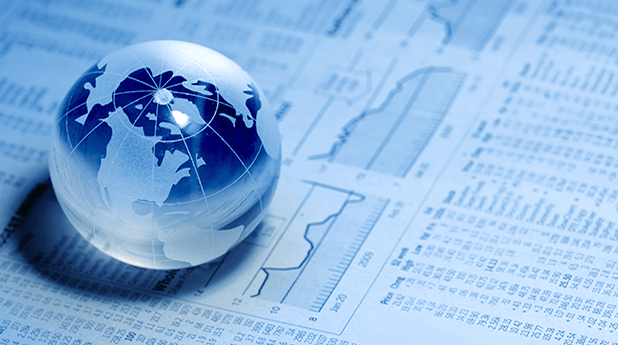Economic Week Ahead: U.S. Federal Reserve and GDP
The Federal Reserve’s two-day monetary-policy meeting will highlight a busy week for economic news, which includes manufacturing data out of China. Also on tap is the first look at second-quarter gross domestic product in the U.S. and Europe.
Monday: U.S. durable-goods orders for June are expected to increase for the second consecutive month after manufacturers ramped up production to meet a bounce back in demand as coronavirus-related lockdowns eased.
Wednesday: U.S. Fed officials wrap up their two-day meeting with little expectation of fresh stimulus. The central bankers will weigh how best to support the economy amid a resurgence of Covid-19 cases in parts of the U.S., along with an uncertain economic outlook, potentially setting up for additional moves in September.
Thursday: U.S. gross domestic product likely posted the biggest quarterly fall on record during the April-to-June period. Data from the second quarter will reflect this spring’s rise in coronavirus cases, heavy job losses, and heightened consumer caution and wide-scale shutdowns in April, with only a partial recovery in activity through June.
U.S. weekly jobless claims rose in mid-July for the first time in nearly four months. Economists and investors will watch closely to see if that was a blip or the start of a trend. Are companies laying off more workers because of a rise in Covid-19 cases and efforts to contain them?
Friday: China’s official manufacturing index for July is expected to show activity increased for the fifth straight month, though at a slightly slower pace than in June. Widespread floods in the southern provinces could have hurt production and demand along the Yangtze River, but overall economists expect China’s economic recovery should remain largely on track.
The European Union’s statistics office releases its first estimate for GDP in the three months through June, and its figures are expected to show the Eurozone economy contracted by 11.3%, which would be the largest decline on record. Separate figures are expected to show the French economy shrank by 15.4%, the German economy by 9% and the Italian economy by 15.7%.
U.S. consumer spending likely posted another solid rise in June as state and local governments eased restrictions meant to slow the pandemic. The figures won’t reflect an apparent slowdown in July.
Last week’s economic data and what does it mean?
Existing home sales surge nearly 21% in June, the highest monthly gain on record
U.S. sales of existing homes jumped nearly 21% in June compared with May, according to the National Association of Realtors. It was the largest monthly gain since the Realtors began tracking the data in 1968 and came after sharp declines over the previous three months due to the coronavirus pandemic. Sales were still 11.3% lower annually.
This count is based on closings, so it represents contracts signed in late April and May, before much of the national economy began to reopen and before the most recent surge in coronavirus cases. Agents report that the U.S. housing market is red hot at the moment mainly due to an acute inventory shortage and historically low mortgage rates.
U.S. weekly jobless claims total 1.416 million, vs 1.3 million expected
U.S. jobless claims rose last week for the first time since March, the clearest sign yet of a pause in the economic recovery as coronavirus cases surge in much of the country and force businesses to close their doors once again. Initial claims through regular state programs increased to 1.42 million in the week ended July 18, up 109,000 from the prior week. On a non-seasonally adjusted basis, claims declined.
There were 16.2 million who filed for ongoing benefits through those programs in the period ended July 11, down from the prior week and less than forecast.
In conclusion
U.S. equities, bonds and commodities are heading for their strongest simultaneous four-month rise on record, highlighting the breadth of the market recovery during the 2020 economic slowdown. Last week the S&P 500 and S&P GSCI commodities index were each up more than 25% since the end of March, while the Bloomberg Barclays U.S. Aggregate Bond Index added more than 3% in that span. If the gains hold during the final week of July, this would be the first time that the gauges all rose that much in a four-month period, according to a Dow Jones Market Data analysis going back to 1976.
Investors and analysts attribute the broad rise in financial markets to faith in government and central bank stimulus programs and hopes for vaccine development. The broad advance is prompting many investors, who had been sceptical, to pare back their cautious wagers and join the rally, giving it further fuel.
Markets continue to climb despite many large companies painting a murky picture of the U.S. economy, highlighting investors’ faith in further stimulus programs. Last week also saw the European Union leaders agree on a more than US$2 trillion spending package. Many investors are also hopeful that U.S. lawmakers will soon reach a deal on further coronavirus aid.
Elsewhere, Gold traded above US$1,900 for the first time since 2011 as investors chased the yellow metal higher amid uncertainty, and belief that precious metals will benefit from the flood of money being printed to prop up the global economies. Some analysts expect the stimulus to stoke inflation, eroding the purchasing power of paper money and making the metals more expensive.
